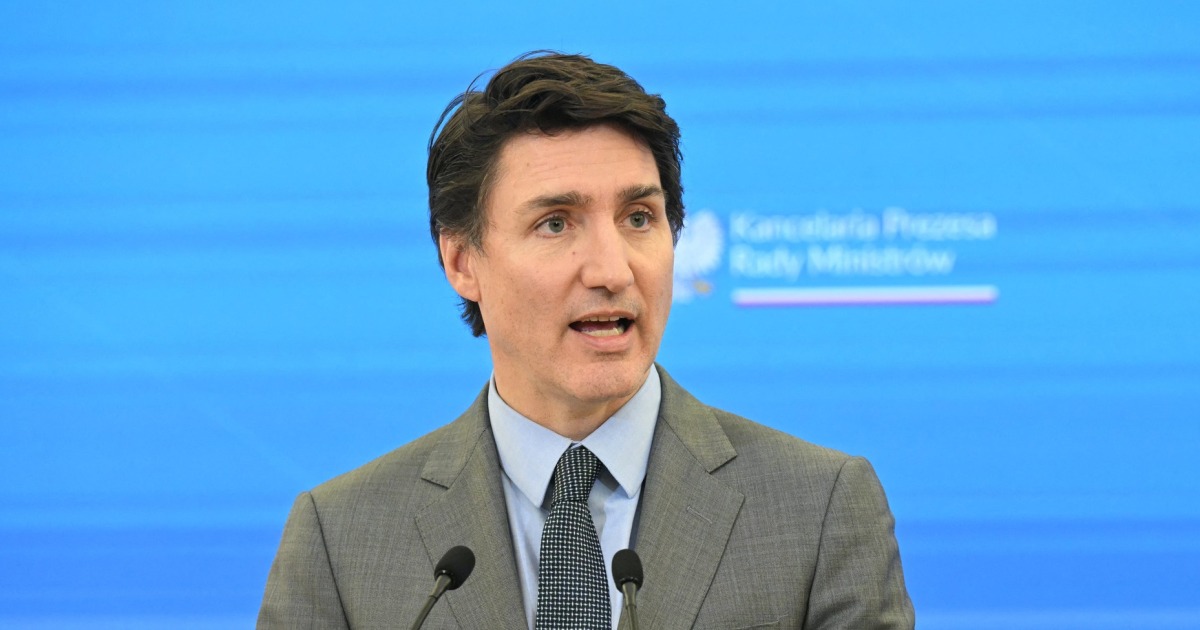
President Donald Trump has signed tariffs on goods coming into the U.S. from Canada, Mexico and China, the White House said Saturday, raising the risk of a trade war with America’s closest trading partners and threatening to drive up prices on everything from cars to avocados.
It is unclear when the tariffs will take effect.
Canadian energy products would have a lower tariff rate of 10%.
Trump said he was imposing the tariffs because he claimed the countries were allowing fentanyl to come into the U.S. More than 107,000 people died from drug overdose in 2023, with nearly 70% of those deaths from opioids, including fentanyl. Trump also said the tariffs were in response to a trade deficit between the U.S. and the three countries because the U.S. imports more from them than it exports.
Economists across the political spectrum expect tariffs to increase what consumers pay for a range of goods, including vehicles, electronics, produce and lumber. Tariffs are paid by companies importing goods into the U.S., similar to a tax.
While some businesses will look to source goods elsewhere, others with no alternatives will be forced to pay the fees. That means U.S. grocery stores will shoulder higher costs for fruits and vegetables grown in Mexico; homebuilders will pay more for Canadian lumber; and automakers will have to pay a tariff each time a component crosses the northern or southern border, which happens repeatedly during the production of a single vehicle.
Companies will have to decide whether to pass these higher costs to consumers or absorb them, which would dent profits or require cuts to protect their margins. The implications could be wide-reaching across the U.S. economy, in part because American consumers and businesses imported more goods from Mexico than any other country.
Trump made tariffs central to his campaign pitch for improving an economy that many voters cited as their reason for returning him to the White House. He has argued the levies would protect American industries from unfair competition by making foreign goods pricier and encouraging companies to manufacture in the U.S. He has also proposed using revenue from tariffs to pay for other policy priorities and deploying them as a negotiating tool.
“This is a beautiful, beautiful example of promises made, promises kept by President Trump,” said a senior administration official.
The official said there was no specific actions the U.S. was looking for the three countries to take in order to lift the tariffs, but rather an end to illegal immigration and fentanyl.
“There’s going to be a wide range of metrics, and in Donald Trump’s golden age we will have only legal immigration and we will have zero Americans dying from Chinese, slash Mexican, slash Canadian fentanyl,” the official said.
But economists have found the tariffs Trump imposed on China during his first term did little to accomplish those goals. Instead, they drove up prices for many imports, led to a net loss of manufacturing jobs and reduced corporate investments. Nearly all the revenue collected from Trump’s previous tariffs on China went to payments he sent to American farmers to offset their losses from tariffs China imposed in response. The levies also didn’t generate significant concessions from Beijing, which has failed to meet many of its commitments under a trade deal negotiated during Trump’s first term.
The president’s latest tariffs on Canada and Mexico threaten to upend one of his signature trade pacts, the United States-Mexico-Canada Agreement. Trump had touted the deal as a victory, as it largely allowed products to move between the three countries tariff-free, much as they’d done for decades under the NAFTA agreement that the USMCA replaced. The current trade deal isn’t up for review until July 2026, but the new tariffs could throw it into jeopardy much sooner.
“This is not him changing some other administration’s work. This is him changing his administration’s work,” said Francisco Sanches, an international trade lawyer with Holland and Knight and a former U.S. undersecretary of commerce for trade during the Obama administration.
The White House said Trump would be issuing the tariffs under the the International Emergency Economic Powers Act. Despite the USMCA, Trump said he has the legal authority to regulate imports during a national emergency, which he declared at the southern border on his first day in office.
While most of Trump’s tariff threats during his campaign focused on China, he has ratcheted up his focus on Canada and Mexico since he was elected. Both countries vowed to retaliate, which would make American products less competitive within their borders and hurt U.S. businesses that sell there. Cars, oil and gas, electronics, industrial equipment and agricultural products are among the top U.S. exports to Canada and Mexico.
“What we’ve seen in these types of circumstances when the United States has put tariffs on another country is an attempt by our trading partners to target really sensitive stakeholders and locations,” said Greta Peisch, a trade lawyer at Wiley Rein who was general counsel for the U.S. Trade Representative during the Biden administration. “They’re very savvy and understand how our process works and what makes an impact potentially.”
A senior administration officials said there is a “retaliation clause” in the executive order issuing the tariffs where if any country chooses to retaliate the U.S. will take further action.
A trade war among the three countries would reduce the economic growth for all of them but could especially impact Mexico, according to an analysis by the Peterson Institute.
“For Mexico, a 25% tariff would be catastrophic. Moreover, the economic decline caused by the tariff could increase the incentives for Mexican immigrants to cross the border illegally into the US—directly contradicting another Trump administration priority,” the report said.
The U.S. auto industry is among the most vulnerable to tariff impacts. For decades, its supply chains have been heavily intertwined with America’s neighbors to the north and south. As vehicles and components cross borders multiple times during the production process, repeated 25% levies could quickly drive up vehicle costs.
The U.S. also depends on agricultural products from Mexico, one of the top suppliers of tomatoes, avocados, berries and peppers. Rising food prices have been a top concern for consumers and voters, with grocery costs up around 25% over the past four years — an issue Trump hammered on the campaign trail.
After his earlier threats, Mexico threatened retaliatory tariffs on American goods sold there, which total around $360 billion. That could hurt U.S. businesses selling to Mexican consumers.
Along with immigration, Trump and lawmakers have raised concerns that China could be using Mexico as a back door into the U.S. to avoid paying tariffs. Mexico has seen a surge in manufacturers relocating there from China as a way to avoid the tariffs Trump put on China during his first term. Investment deals announced by Chinese companies in Mexico have surged over the last few years, according to data compiled by the research firm Rhodium Group.
The tariffs on Canada are expected to drive up prices of Canadian lumber, known for being lighter and easier to work with, said Dustin Jalbert, a senior economist for wood products at Fastmarkets.
Canadian lumber mills have already been struggling from previous duties imposed by the U.S. in recent years and the destruction of millions of acres of forest from a pine beetle infestation. More tariffs could hobble the industry further, he said.
“Consumers are going to pay for that in some capacity because in the end, you have less supply available in the market, and prices are going to be somewhat higher on the margin,” said Jalbert.
That could keep pressure on home prices that are already far out of reach for millions of Americans, the National Association of Home Builders has warned.
The tariffs could also drive up gas prices, as crude is among Canada’s top exports to the U.S., hampering Trump’s ambitious vow to halve energy costs in his first 12 months.








